The first stage of the KonMari process is clothing, which also includes shoes, bags and jewellery. Over two days, I completed this whole category. Today, I’ll share how this process went; and tomorrow, I’ll share a few things I learned.
Kondo recommends starting with clothes because it’s an easier category with which to learn the process. I was sceptical of this for myself, because I’m sentimental about clothes and mine often have a high ‘rarity’ value – many are handmade or one-of-a-kind in some way. (Even if just because they’re super old!) However, clothes are some of the more intimate items we own (worn next to our body) and frequently used, and thus we are likely to have a sense of how we feel about them. Are you ready to know how the process went? Read on…
I started with all my tops, pulled them out of storage, and laid them on the bed.
I then began the sorting, asking myself if each item sparked joy, putting the discards aside and piling the keepers together. At the end I piled all the discards in a growing discard heap, and folded everything to be kept using the methods Kondo recommends. I put all my tops away before beginning the next subcategory, not wanting a huge mess to accumulate.
I didn’t attempt any massive storage overhaul or fancy organising as I put things away, because that would sidetrack me from my present purpose. However, I did try to arrange things in an intuitive way, grabbing containers as needed from what I already had. I was surprised that, although I didn’t discard a huge number of items, everything fit ‘magically’ into its proper space, whereas before I tended to have some overflow. This whole procedure from start to finish took about 35 minutes.
When I was finished with tops, I wrote down my feelings. Here is what I wrote:
PROFOUND DEPRESSION
Guilt
Regret
Apathy
Resentment
Whoa! I felt really, really down at this stage, which surprised me. Kondo explains that it’s only in discarding things that we have to face the way we feel about them or the circumstances surrounding them. While we keep them, those feelings lie dormant, hence why we tend to hang onto things even when we may not really want them anymore. I am certain that this is true for me.
I also felt dismayed by how hard it was to identify what sparked joy. I am used to having strong feelings for my clothes, and they traditionally bring me a lot of enjoyment, but since having a baby I feel a malaise about my whole being, and this is represented in how I feel towards my clothes: apathy. Given that I’ve replaced a lot of my wardrobe recently, I also felt guilty about discarding anything new, and discarding my older clothes – for example those I used to wear to work – made me regretful for that stage of life that was past.
Despite these negative feelings, I also felt oddly compelled to continue. So later in the day (during another baby nap) I moved onto the next category, bottoms (trousers, skirts, leggings, etc.). I followed the same procedure. Then I moved to hanging clothes (coats, jackets, dresses, robes).
At that point, I considered my feelings again and wrote:
Brave
Fresh
More honest
Free to get something I really like
The last point had to do with discarding a coat I’ve had for years and had grown tired of, but could never justify replacing because it was still holding together. Getting rid of it, and suddenly having a true gap in my wardrobe and the license to find a coat I really enjoy, was very exciting.
And so I worked through all the clothing subcategories: socks and underwear, bags, accessories, jewellery, special event clothing, and shoes. All of this spread over two days in small chunks of time.
At the outset, I thought this method would be horribly exhausting. Having to pull every single item out of storage, identify your feelings toward it, and then put it all back, sounds physically and emotionally taxing. I was surprised, however, that despite my initial feelings of depression, overall the exercise wasn’t as energy-sapping as I feared. This is because the KonMari method does not require you to justify or rationalise your decisions, which I found liberated a lot of energy. I’ll talk more about this in my next post.
At the end, I took another day to sort my discarded items. Most of them went into bags for donation; some I collected for the textile recycling bin; and a few got cut apart and put into my fabric collection for salvage, if I really loved the fabric itself. I dropped off the donation bags that same day.
I’ve made a rule for myself that I’m not allowed to move onto the next category until I finish really discarding the category I’ve finished, i.e. get the stuff out of the house. Otherwise, I’m just transferring clutter into piles that make my space more chaotic.
As for the finished result, indeed it does give me joy to look at my neatly stored clothing. I don’t think I discarded a tremendous amount, not 50% or anything, but somehow everything was reduced to an amount that fitted just right. Kondo promises this will be the case, but this notion sounded weird to me until I witnessed it. I was able to pull some things out of off-season storage and bring them into my drawers, like my winter pyjamas and long-sleeved tops.
Tomorrow, you can read Part 2 of clothing, about a few things I learned.
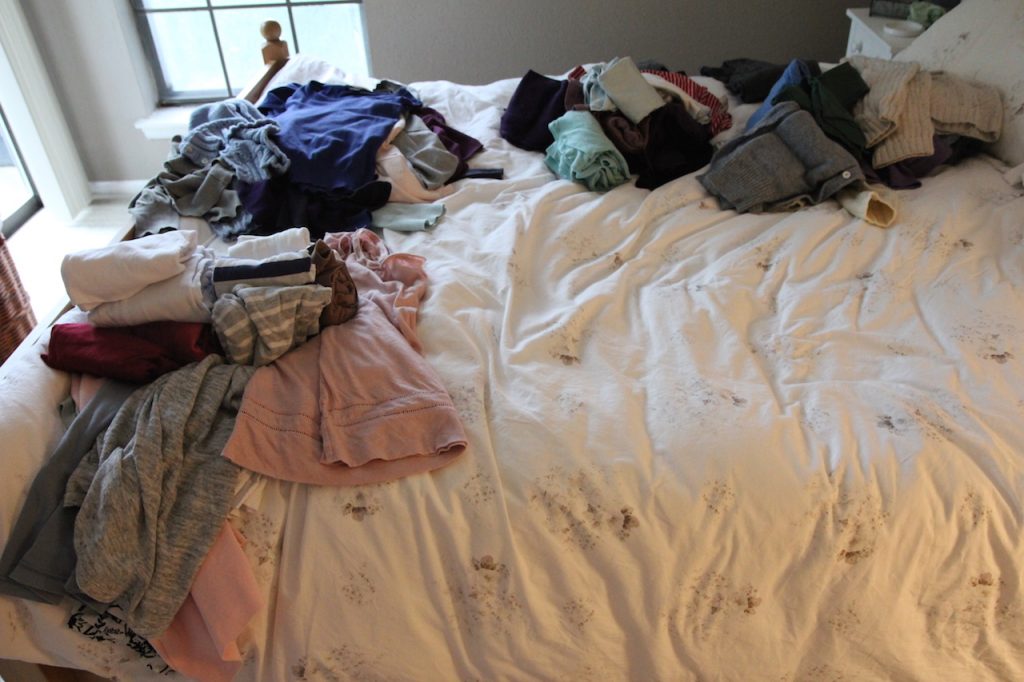
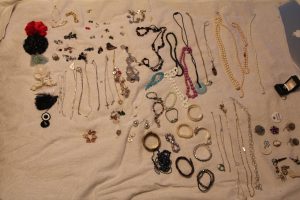
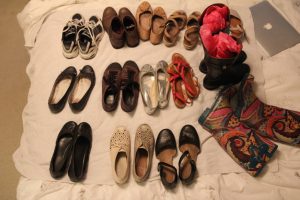
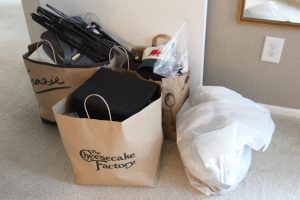
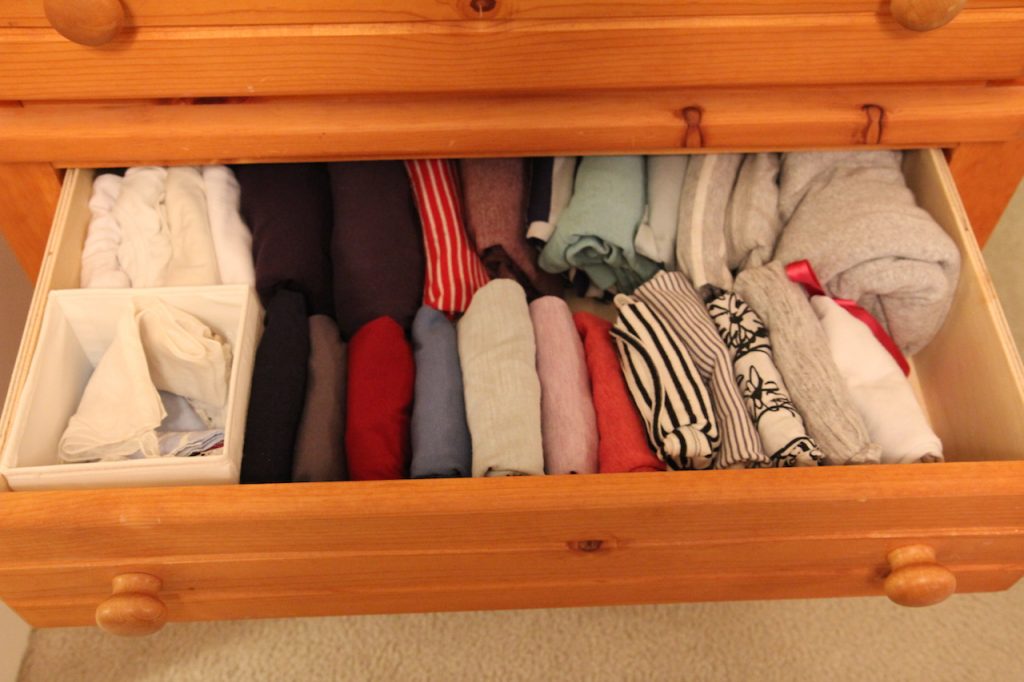
One thought on “Konmari: Clothes, Part 1 (How It Went)”